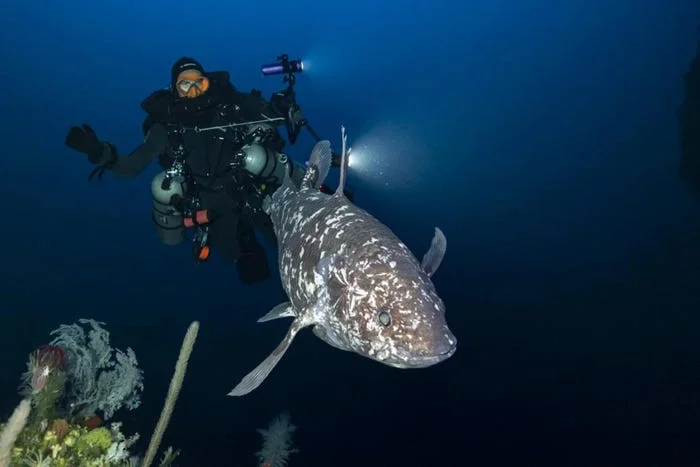
The Rediscovery of the Coelacanth: A Living Fossil Surfaces After 70 Million Years
The coelacanth, a fish long believed to be extinct for over 70 million years, has resurfaced in a stunning discovery off the coast of North Maluku, Indonesia. These ancient fish, often referred to as "living fossils," have intrigued scientists and researchers alike for their remarkable evolutionary history and adaptability.
On two successive days, divers led by Alexis Chappuis captured the first-ever images of the Indonesian coelacanth in its natural habitat, at an astonishing depth of 145 meters. The identical color pattern of white dots on the fish in multiple photographs confirms it as the same individual, a testament to the biodiversity that remains hidden beneath the ocean’s surface.

Researchers have identified several coelacanths, noting that black stars on a map illustrate where these magnificent creatures were previously observed, either through remotely operated underwater vehicles or caught accidentally by fishermen. The recent findings deepen our understanding of these enigmatic fish that once swam among the dinosaurs.

The significance of this discovery cannot be understated. Coelacanths have been a subject of fascination due to their unique anatomy and historical context as precursors to land animals. This resurgence offers a rare glimpse into the past, providing opportunities for scientists to study evolution in real-time.

As we delve deeper into the oceans, new species and populations continue to emerge, challenging our perceptions of marine life and its resilience. The coelacanth exemplifies the mysteries that the natural world holds, and raises questions about how many more "living fossils" await discovery beneath the waves.
As we reflect on this extraordinary find, what do you think the future holds for the coelacanth and other ancient species? We invite you to share your insights and thoughts in the comments below!